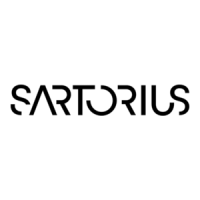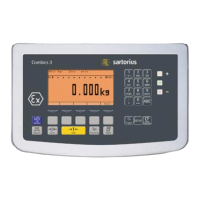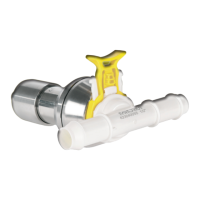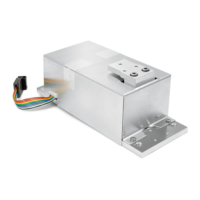
Do you have a question about the Sartorius Combics 3 Series and is the answer not in the manual?
| Brand | Sartorius |
|---|---|
| Model | Combics 3 Series |
| Category | Accessories |
| Language | English |
General safety rules and warnings for device operation and handling.
Instructions for proper installation, including cable connections and environment.
Details on the device's ingress protection rating for dust and water.
Guidelines for using the device in legal metrology applications.
Description of the Combics 3 indicator's features and capabilities.
Specifies the intended applications and limitations of the Combics 3 indicator.
Visual identification of the indicator's display and keypad controls.
Identification of ports and connectors on the back of the indicator.
Steps for unpacking, acclimatizing, and connecting the device.
Instructions for connecting weighing platforms and installing interface cables.
Detailed pin assignment charts for COM1, COM2, PS2, and A8 interfaces.
Instructions for connecting PCs and barcode scanners via COM and PS2 interfaces.
Instructions for connecting the device to AC power and associated safety precautions.
How to activate, use, and exit the service mode for configuration.
Overview of the setup menu structure accessible in service mode.
Configuration of the ADC for weighing platforms, including parameters and modes.
Detailed steps for setting scale interval, capacity, and range configurations.
Entering geographical data for external adjustment and legal metrology.
Procedures for calibrating and adjusting the weighing instrument.
Methods for external calibration using factory or user-defined weights.
Performing internal calibration for IS weighing platforms.
Adjusting the scale using characteristic load cell data without physical weights.
Steps for external linearization using factory or user-defined weights.
Procedures for setting and deleting preload values.
How the device operates in weighing mode, including keys and display.
Using the keypad for numeric, text, and special character input.
Saving settings and applying tare weight for weighing operations.
Understanding the weighing mode display layout, symbols, and data.
Interpretation of LEDs and common error codes for troubleshooting.
Navigating menus, saving settings, and general configuration.
Configuring general device parameters like language, password, and printing.
Settings for COM ports, UniCOM, and specific protocols like SBI and XBPI.
Configuring input/output ports, barcode scanning, and printout options.
Settings related to acoustic signals, keypad lock, auto-shutdown, and display.
Core weighing operations, including auto-taring, printing, and platform selection.
Information on adjustment counters and device parameter settings.
Procedures for taring the scale and weighing with numeric entry.
Using the SQmin function for minimum sample quantity display and verification.
Assigning and using ID codes for data identification and tracking.
Overview of available interfaces, features, and connection warnings.
Detailed technical specifications for serial interfaces and UniCOM.
Options for connecting printers, PCs, weighing platforms, and other devices.
Setting up data interfaces as COM ports with various operating modes.
Configuring SBI data output and understanding the data input format for commands.
Defining the format for data output, including character sets and special codes.
Mapping PC keyboard functions to the device's soft keys and functions.
Setting up printout configurations for headers, identifiers, and data blocks.
Examples of various printout formats for different applications.
List of error codes, their causes, and recommended solutions.
Information on professional servicing, repairs, and safety during maintenance.
Guidelines for cleaning the indicator and stainless steel surfaces.
Checks for safe operation and replacement of the dust cover.
Instructions for the proper disposal of the equipment and packaging.
Technical specifications for the A8 option.
Technical specifications for the A20 option.
Graphical representation of the device dimensions in mm.
Lists available printers, adapter cables, and connection cables.
Lists interface modules, peripheral devices like scanners and displays.
List of available operating instructions and installation manuals.
Details on scale verification and Sartorius customer services.
Statements of conformity with relevant CE directives.
Official test certificate details for the indicator.
Explanation of protective marks, metrology stickers, and model designations.
Illustrations of various plates and labels found on the device.
How to create evidence of module compatibility for legal metrology.
Steps for filling out compatibility evidence and using the software.
Copyright notice and legal disclaimers regarding the documentation.
How to access the device using the service password.
Procedures for accessing and managing the general password.











